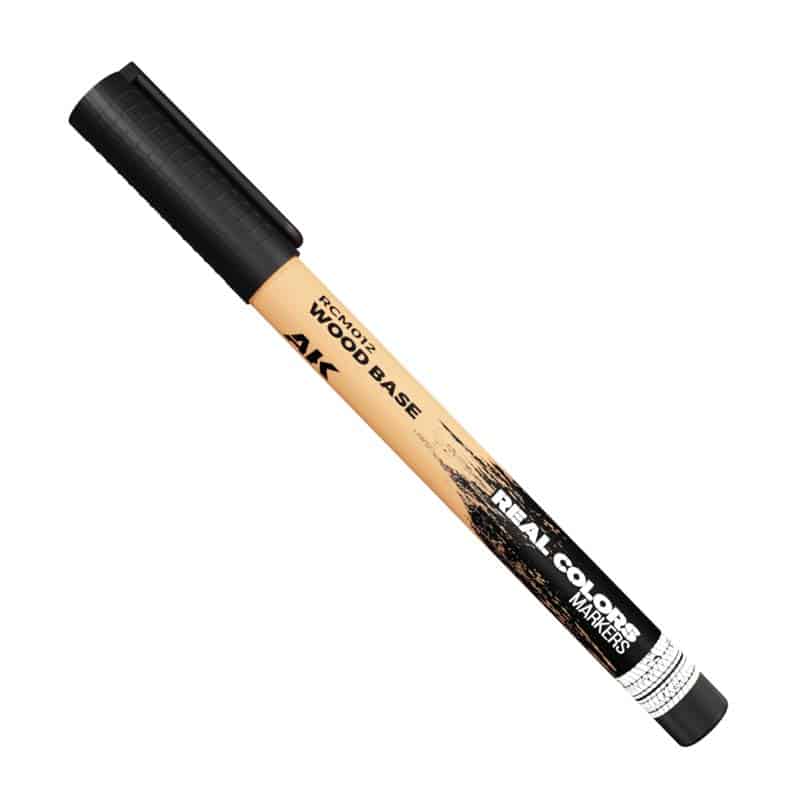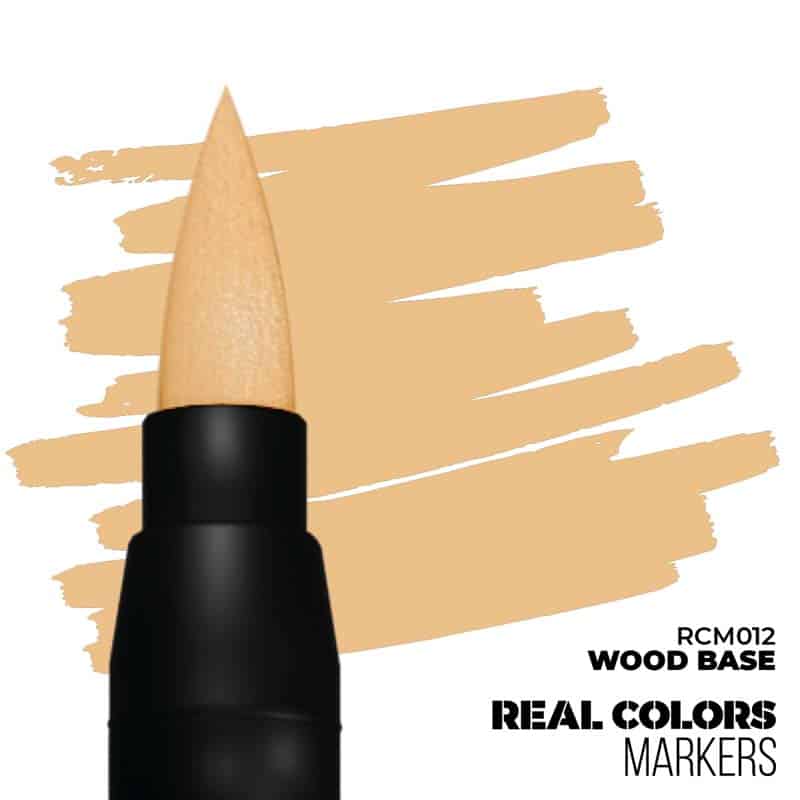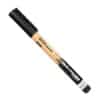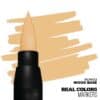£1.95
Wood Base Real Colors Markers RCM012 AK Interactive
In stock
Wood Base Real Colors Markers
Until now, the most important tools for painting a scale model have been the airbrush and the paintbrush. Now, we’re adding a new element to this equation. We introduce a new way of approaching painting in modelling
In our hobby, we can find acrylic paints, enamels, lacquers, waxes, etc., and for their application, we use the brush, the airbrush, and the sprayer. Without having a line specifically developed to meet the needs of modelers, some have occasionally used markers from the fine arts and crafts sector to experiment on scale models; sometimes with alcohol-based or permanent markers and always with standard colours that do not meet expectations or limit finishes and do not offer much resistance to subsequent treatments.
School markers and those from fine arts are designed to paint on surfaces such as paper, wood, fabric, etc. Therefore, their use on plastic or resin does not yield good results since their adhesion, coverage, and resistance are very limited. From now on, we will have specific acrylic markers for modelling with ideal characteristics for working on scale models.
We modelers need to experiment to discover new possibilities and new effects. As a company, AK needs to innovate constantly and be at the forefront of our hobby. It is under both premises that the idea of creating this new product arises. The current needs of our society also increasingly demand non-toxic products, easy to use, and that allow us to bring the hobby closer to more people in a simple way so they can get hooked on modelling. All the products used for the development of the acrylic inks in these markers are environmentally friendly. The idea of painting with a special marker for modelling is a natural way to start working with models, allowing you to bring any detail to life quickly and easily. It allows for precise application of a base coat on surfaces of plastic, resin, or metal, with or without priming, and with maximum control and comfort. The markers are designed for painting accessories and small parts, cockpits, vehicles in small scales, etc., but they also open up a multitude of possibilities for experimentation.
The tip is another important aspect of the marker. It has to be in line with the paint being used for everything to work properly. The wetting and anti-clogging agent in the paint allows the high-quality felt tip to provide a smooth and precise stroke. The special felt tip should be used gently, without pressing too hard. You can use the tip for details or the side to cover larger areas.
Can I paint a tank, an airplane, or a whole model?
You can paint whatever you want. If it’s a small-scale kit, markers are very practical. For painting larger models, it’s better to continue using the airbrush for the base coats.
What’s the capacity of a marker?
The durability of the paint in a marker is described by meters, and in our case, the writing allows between 60 and 70 meters.
How do I store the markers?
The paint characteristics of the RC Markers allow for temperature differences from 50°C to -20°C without altering their properties, which is important when shipping the markers by air.
Can I change the finish of the markers?
Once the work is finished, we can use any type of varnish to achieve the desired finish: matte, satin, or glossy.
Is it possible to apply multiple layers of paint?
We can apply a second layer to cover more, almost immediately. Keep in mind that lighter colours may need more coats to cover, like any paint, especially if we paint without priming on dark bases. Usually, dark colours tend to cover better on any type of paint and substrate.
Can I paint over the ink from the markers?
You can paint over what’s been painted with the markers without any problem and without fear of removing the paint. This is very useful especially when we want to create hard-edge camouflages, mottling effects, etc.
Brand
AK Interactive
Shop our AK Interactive Model Kits, Paints & Accessories
Browse our collection of AK Interactive products; we have an excellent range of model kits, paints, and accessories. Our selection of AK Interactive has a wide choice of paint sets and individual paints to make your models look more realistic. Why don’t you make your scale model kits look even more realistic with our weathering products? Also, we have all the tools and accessories you need to start modelling. If you require any assistance, please contact us, and a team member will get back to you shortly.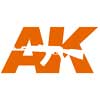
- Royal Mail Tracked (Standard)** (£3.89) 2-3 Working Days***
- Royal Mail Tracked (Express)** (£5.99) 1-2 Working Days***
- FedEx (£8.99) Next Working Day***
- Free – 2-6 Working Days*
** Limited to maximum weight of 2kg *** These are not guaranteed delivery times and delays are possible
*Free delivery is subject to restrictions, orders between £60-£99.99 containing products that can only shipped with Royal Mail. Orders that include products like aerosols, large quantity of flammable products or over maximum size and weight allowed by Royal Mail will not be sent free and are subject to a carriage charge, Orders over £100 are not subject to restrictions and apply to UK Mainland only. Orders containing hazardous or oversized goods cannot be shipped to NI, IOM, IOW, Highlands, these are excluded from our free shipping.
Order cutoff times - Monday 11am, Tuesday to Friday 12pm.
Order processing days Monday-Friday
Working days are Monday to Friday and do not include weekends

